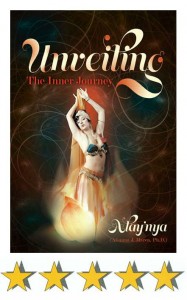Our “Inner Amazon” – Strength at Our Service
When Antonia Wolff, the protege of Carl Jung, intuited her understanding of the four “modes” that made up the feminine psyche, she did a great job of describing three “feminine” or “soft” archetypes, and one that she labeled the Amazon. She published her work as a pamphlet; Structural Forms of the Feminine Psyche.
Wolff’s delineation gives us a very useful way to “look inside ourselves.” Functionally, we each have eight core archetypes (four masculine, and four feminine), and six of these (three masculine, and three feminine) are our power archetypes. These are the ones – according to the Kabbalah (and shown visually in the Major Arcana) – that we need to cultivate in order to become a fully integrated person. (The remaining two, it seems, are those which we naturally use as “rest-and-recharge” modes.)
When we women “look inside ourselves,” we easily see our three feminine modes or archetypes; our wise, intuitive, and calm High Priestess, our loving and nurturing Isis or Empress, and our sensual, fun-loving, and playful Hathor or Love-Goddess. We can also easily discern our feminine “rest-and-recharge” mode; Hestia. This is when we clean house in order to clean out our heads.
Because we live in a masculine-dominant world, we see the masculine roles very easily as well. Thus, it is easy for us to discern when we are being in any of our three masculine power archetypes; our creative and visionary Magician, our organizing and managing Emperor, or our guiding and coaching Hierophant. We can also discern when we are in our masculine rest-and-recharge mode, or Green Man. (For women, the Artemis imagery is useful; think of Women Who Run with the Wolves.)
As a side note: If we were male, it would be easy for us to “lump together” our three feminine power archetypes into one. This would be a convenient kind of emotional shorthand. Moore and Gillette did this when they described the four core masculine archetypes as King, Warrior, Magician, Lover. In their “typology,” they’ve combined all three feminine power archetypes into one, and called it the Lover. Not completely accurate, but useful. Or rather, this is as useful a shorthand for men as it is for women to think about their inner Amazon. Each is a compound of three modes, but each of these “compound archetypes” has something in common.
So what is it that characterizes our inner Amazon, and makes her so distinctly different from our other three feminine power archetypes? And at the same time, we could be asking ourselves: What is distinctly different about the Lover “compound archetype” that makes it unique when compared with the three power masculine archetypes? (These are the Emperor, Magician, and Hierophant – Moore and Gillette missed this last one, and instead substituted the Warrior archetype – which is transition mode, not a power archetype. More on that in some future blog.)
The answer is simple. (Keep in mind, now, that we’re talking archetypes – overarching and really rather simple modes, and that we each have some aspects of each of these archetypes in us.)
The masculine archetypes are all Judging, to use Jung’s terminology. That means, they are all “come-to-closure” archetypes. (This is what Jung meant with Judging; this is not about being “judgmental” about people.) The feminine archetypes are all Perceiving; that is, they are more open-ended. They are open to possibilities and connections.
In short, the basic “male psychology” (each of the core masculine power archetypes) likes to compartmentalize-and-complete. The basic “feminine psychology” (each of the core feminine power archetypes) likes to connect-connect-connect. This insight is what led authors Bill and Pam Farrell to write their book, Men Are Like Waffles – Women Are Like Spaghetti: Understanding and Delighting in Your Differences.
So with all of this as a frame of reference, we now understand that what our inner Amazon does for us as women is to give us the masculine strength of “getting things done.”
And is this ever a useful gift!
One of the best things that we can do to empower our inner feminine archetypes is to have a strong Amazon living in service of our feminine core. She gets things done, she protects and defends, she provides strong boundaries. Within the boundaries that our Amazon establishes, we get let ourselves go. We can be soft and vulnerable. We can be as “diffuse” as we desire. We can connect-connect-connect – knowing that our Amazon put some structure around our connecting.
Our Amazon is valuable. She is our strongest ally. And the more that we cultivate her, the more we are able to let ourselves go safely into our feminine core. Sounds a bit contradictory, but worth considering. So why not make this a journal topic over the month of February? Re-ignite a hot, sexy, voluptuous love affair with yourself. And let your inner Amazon “live to serve the Queen”!


